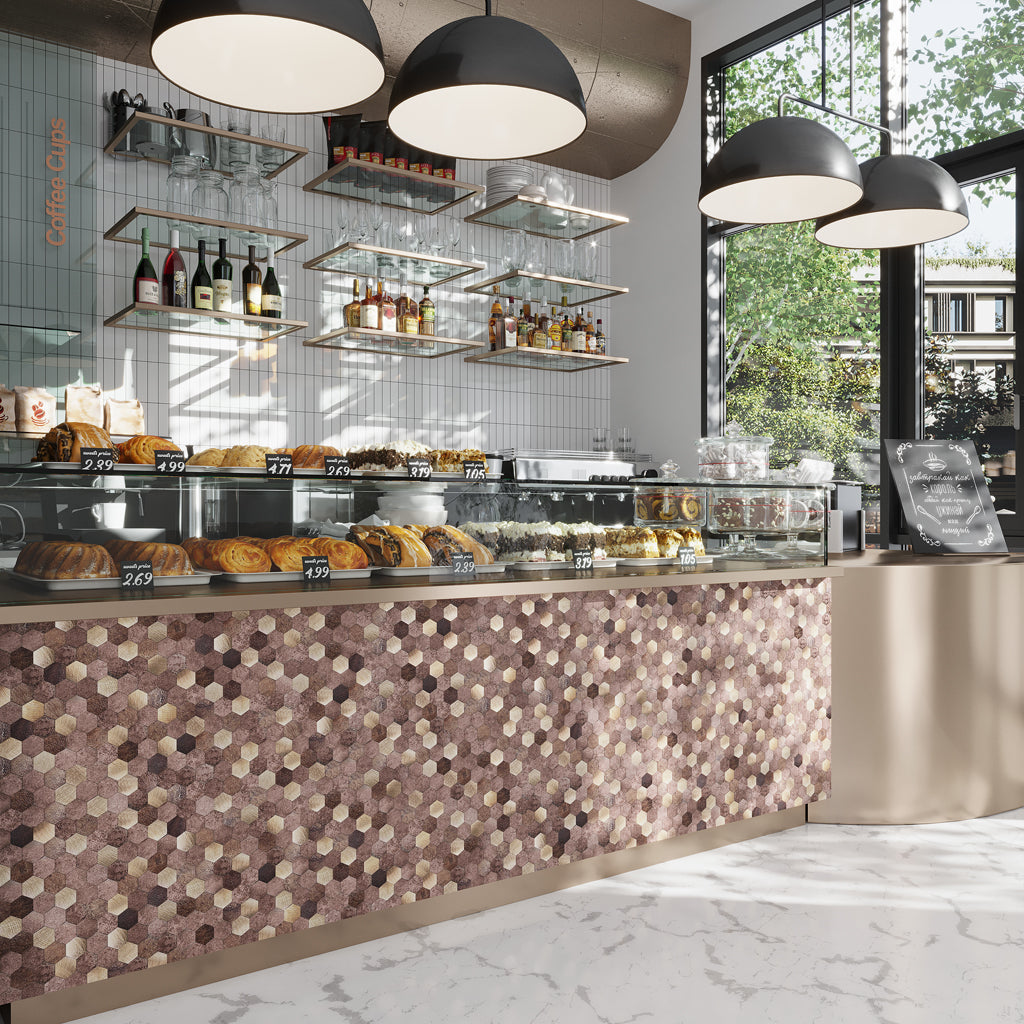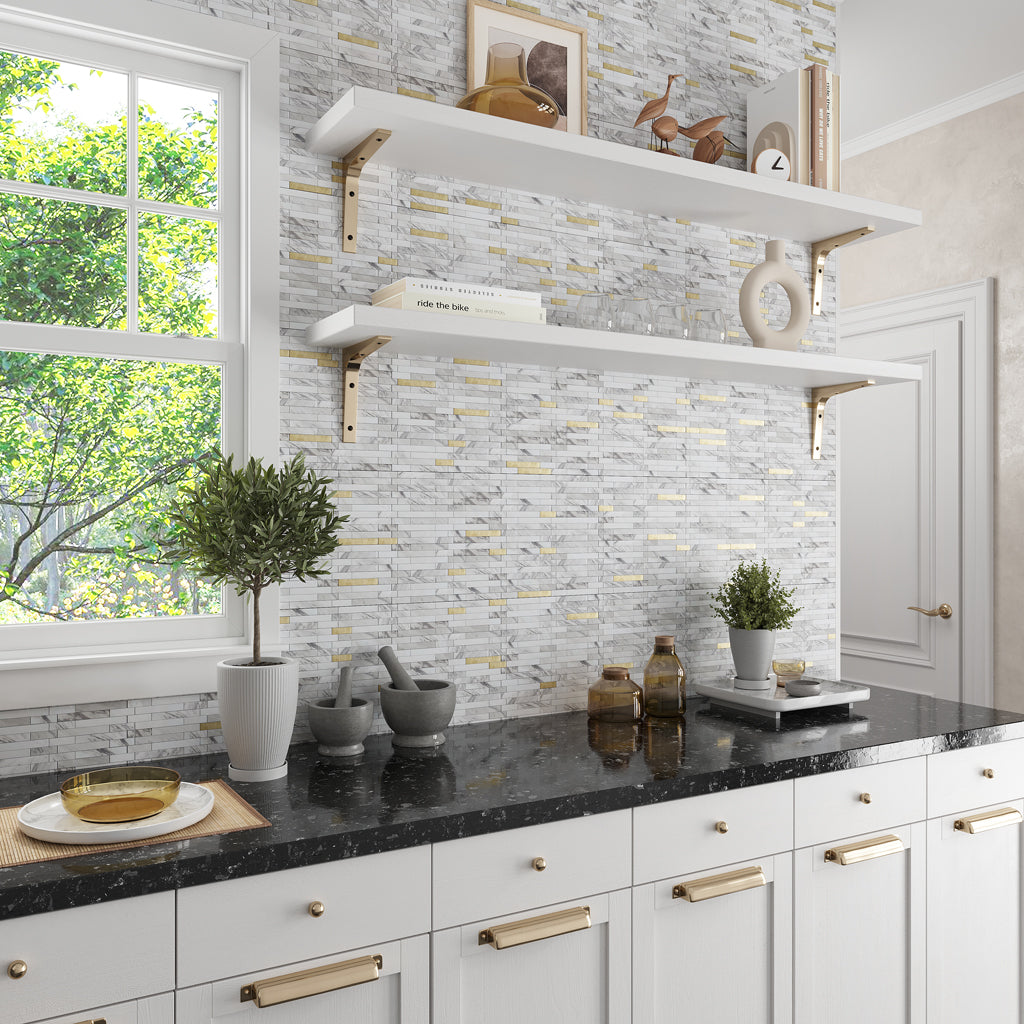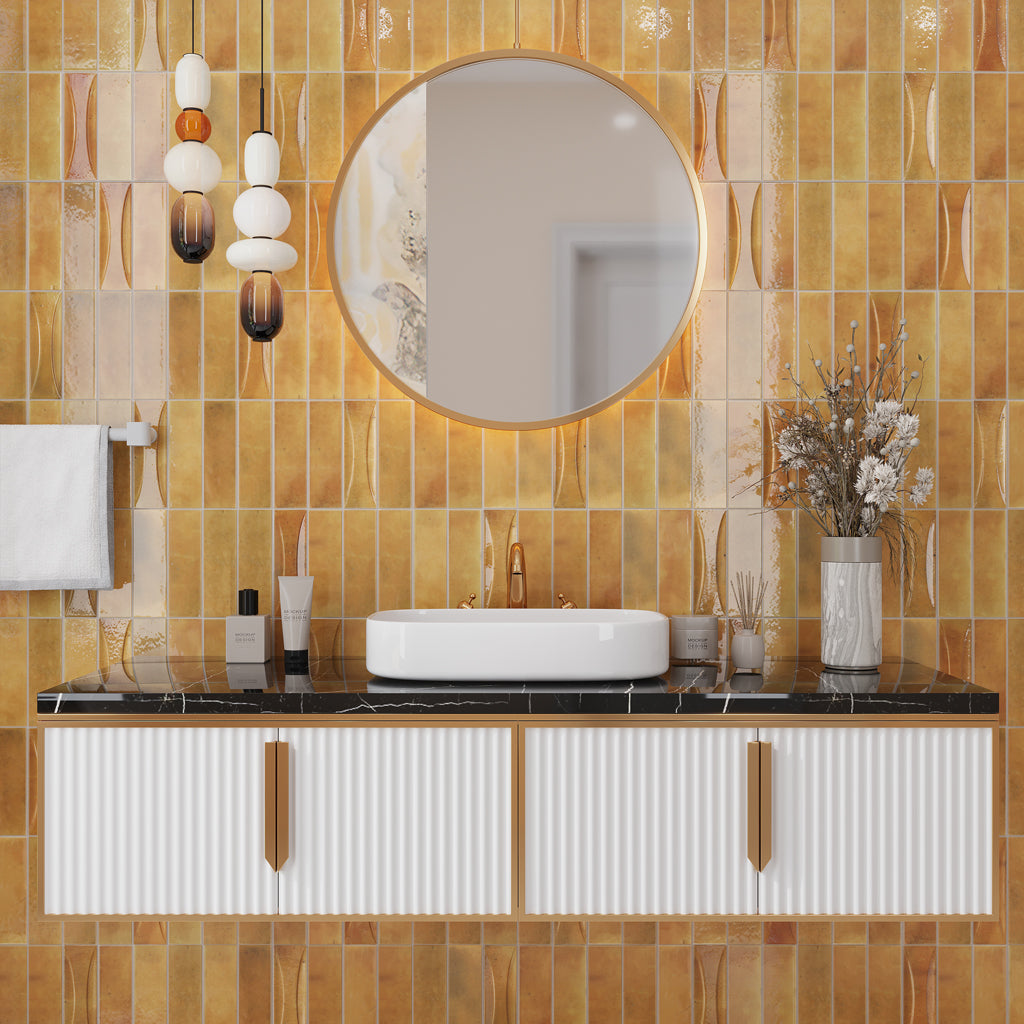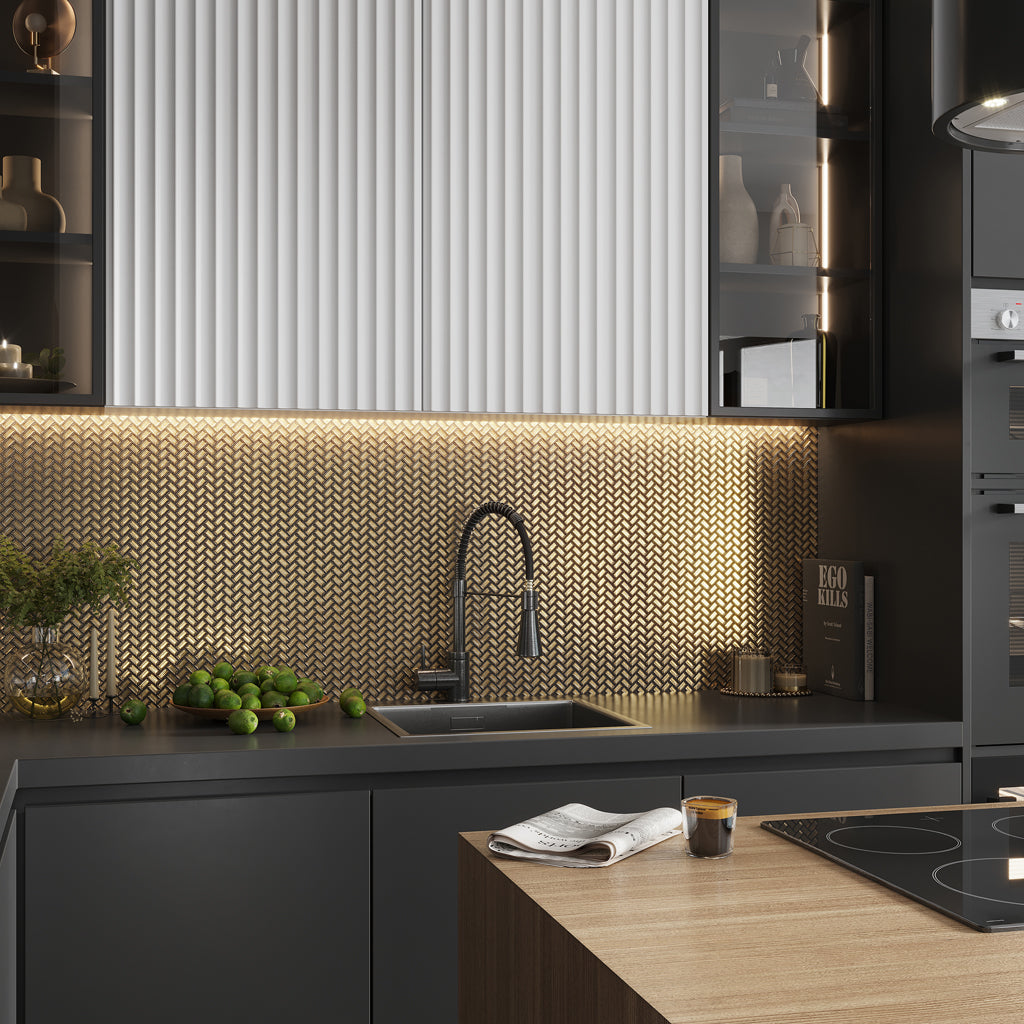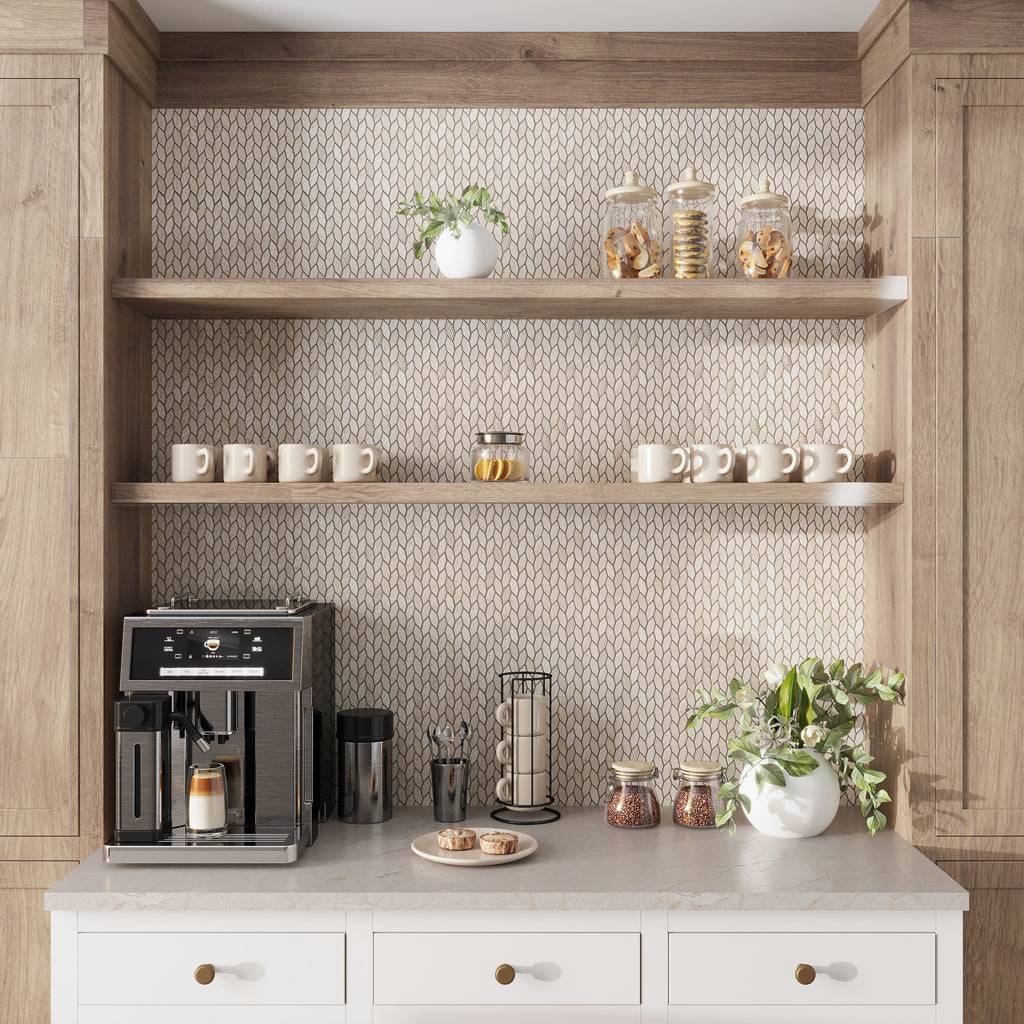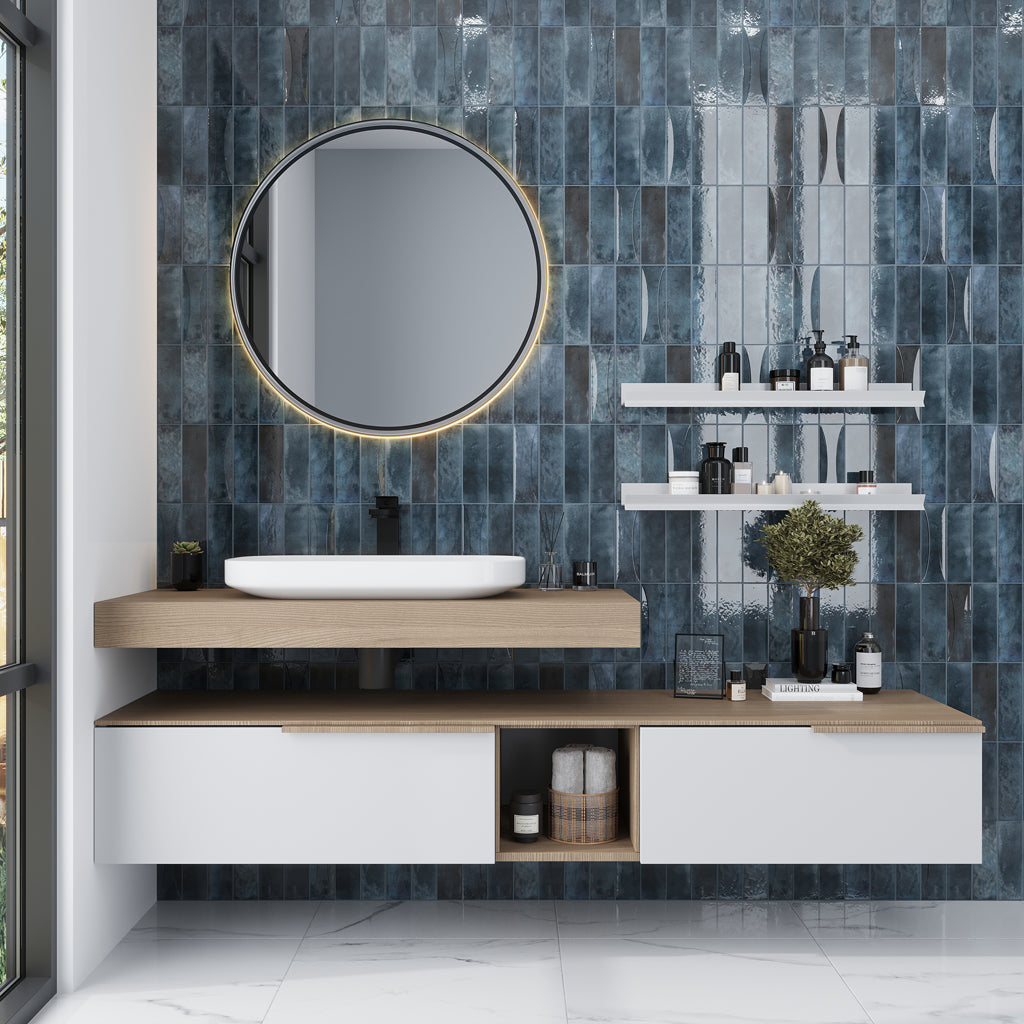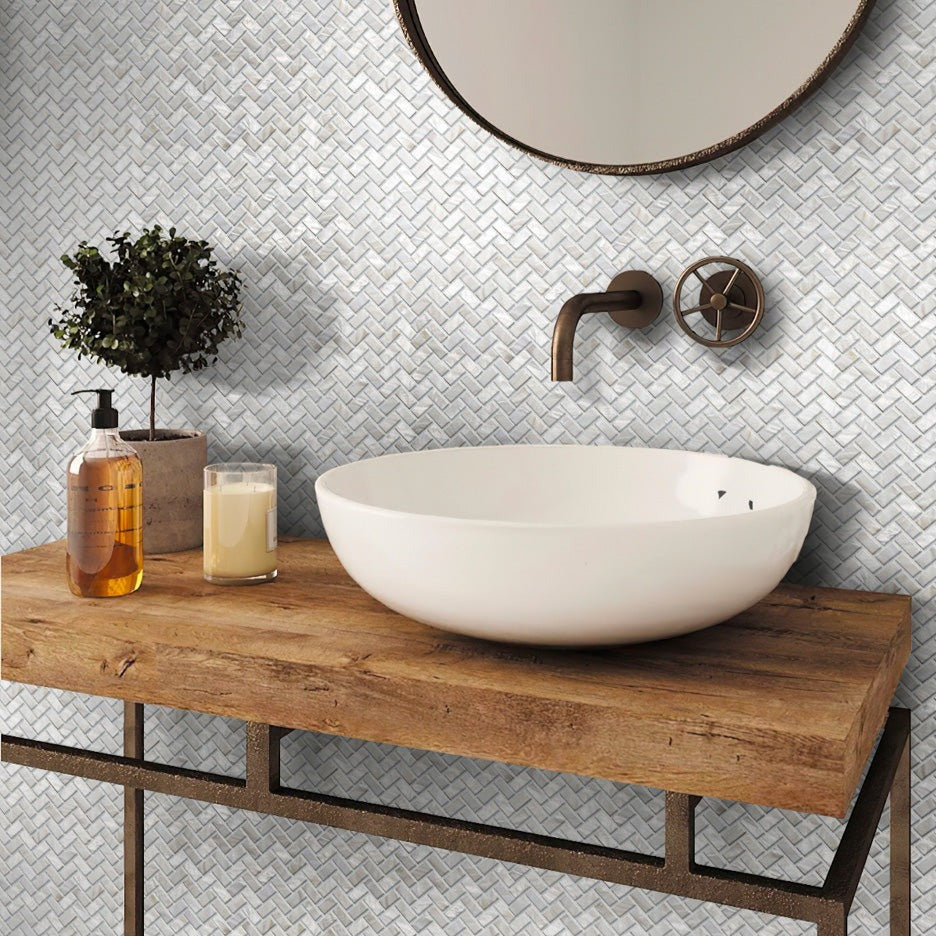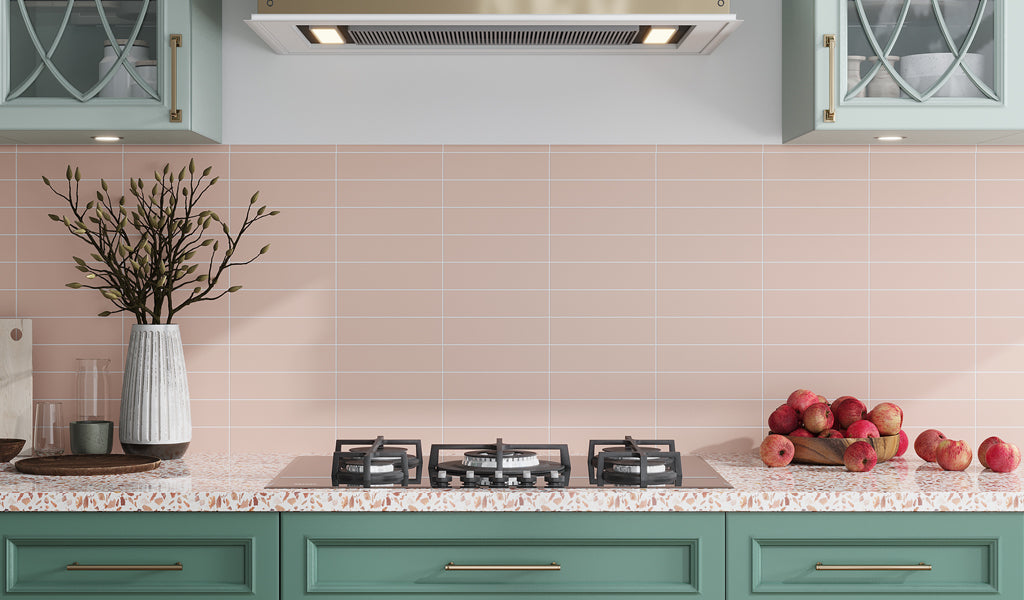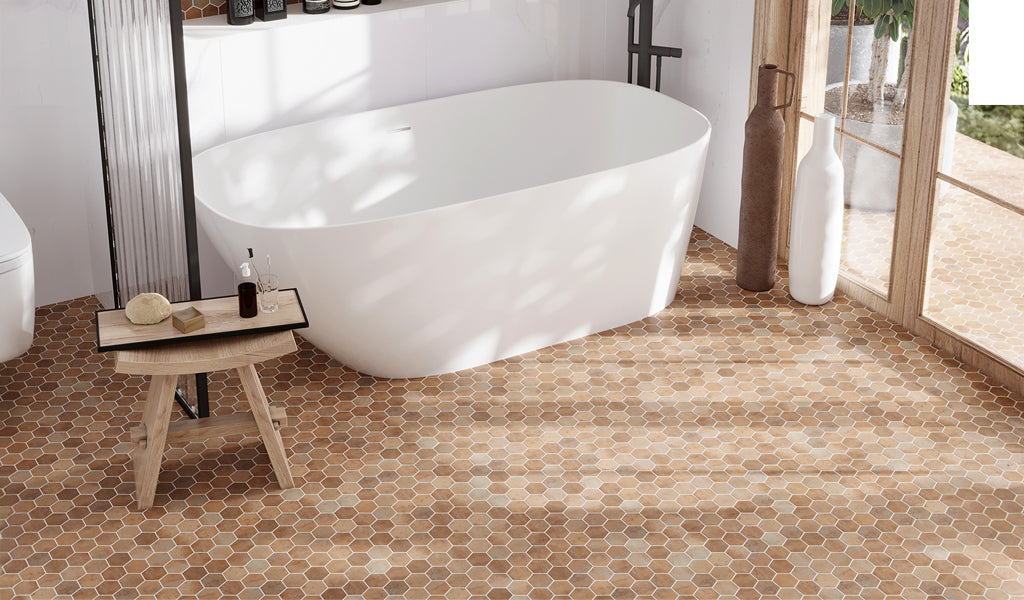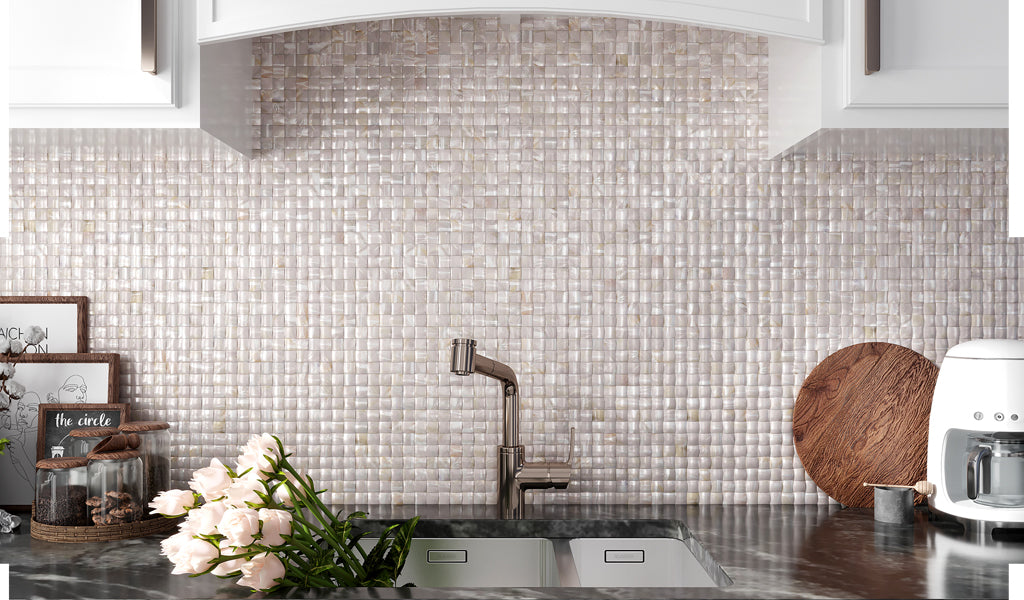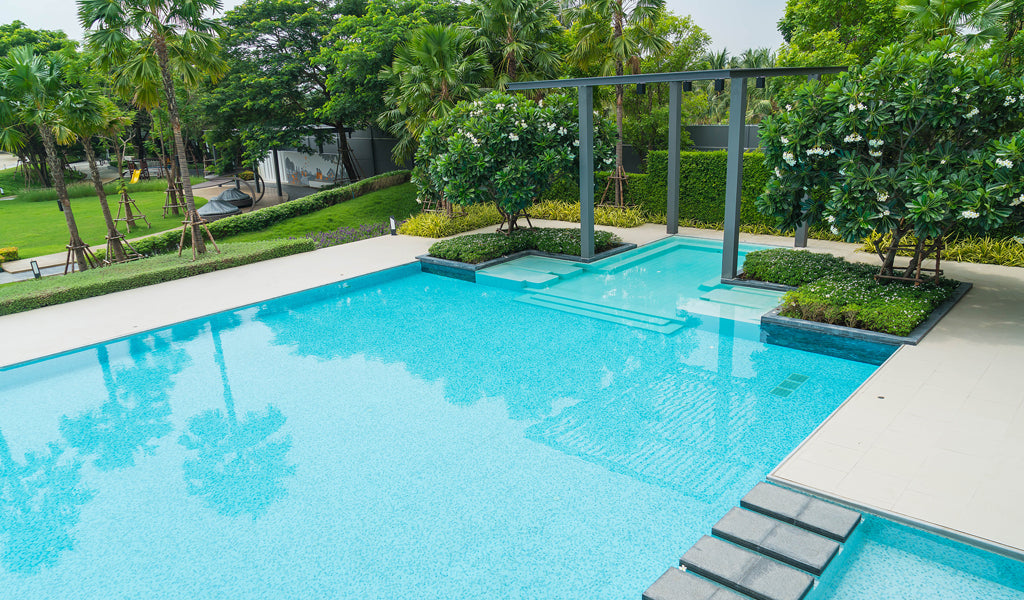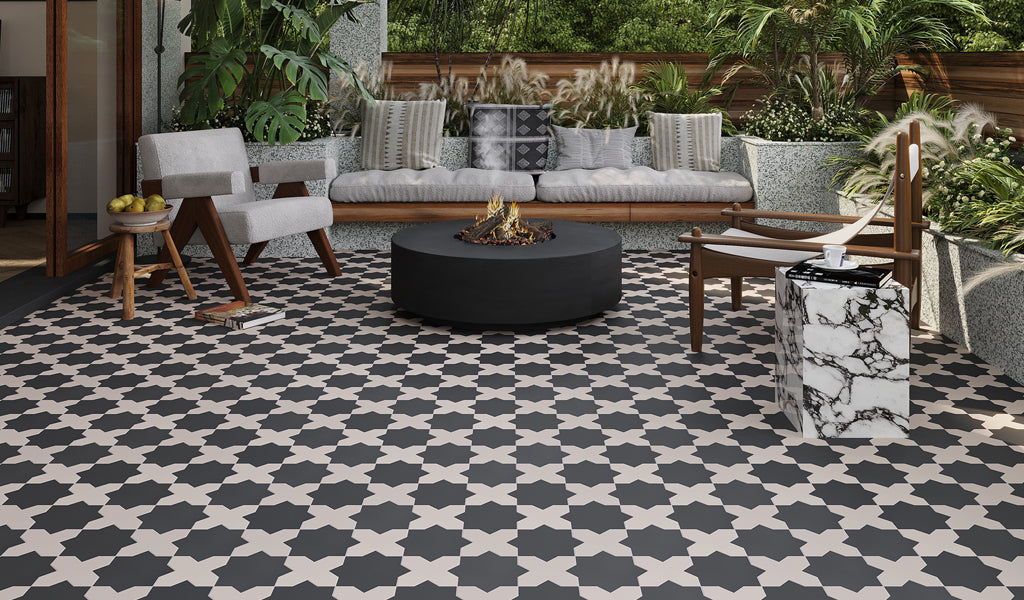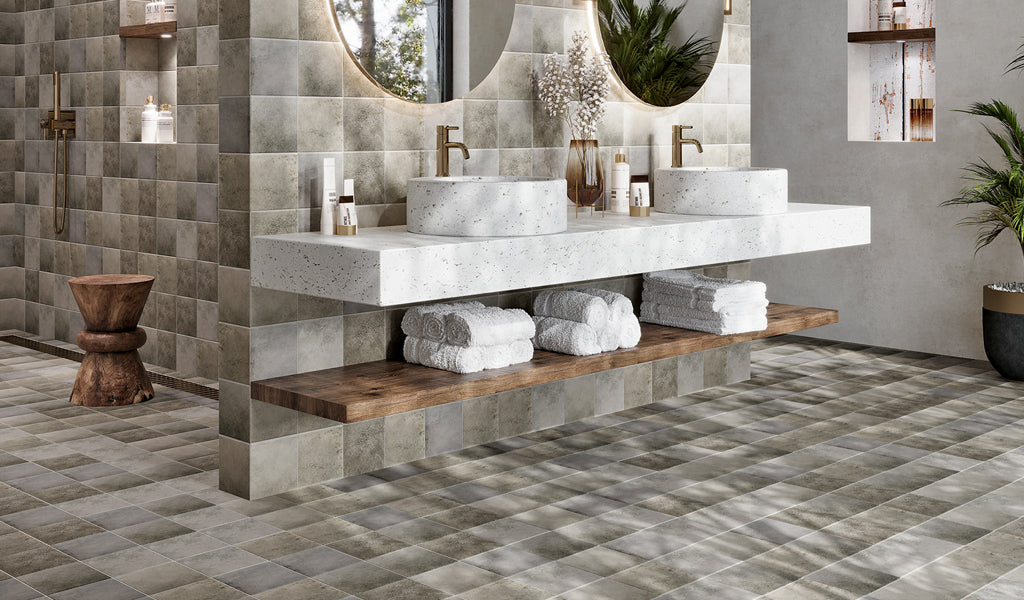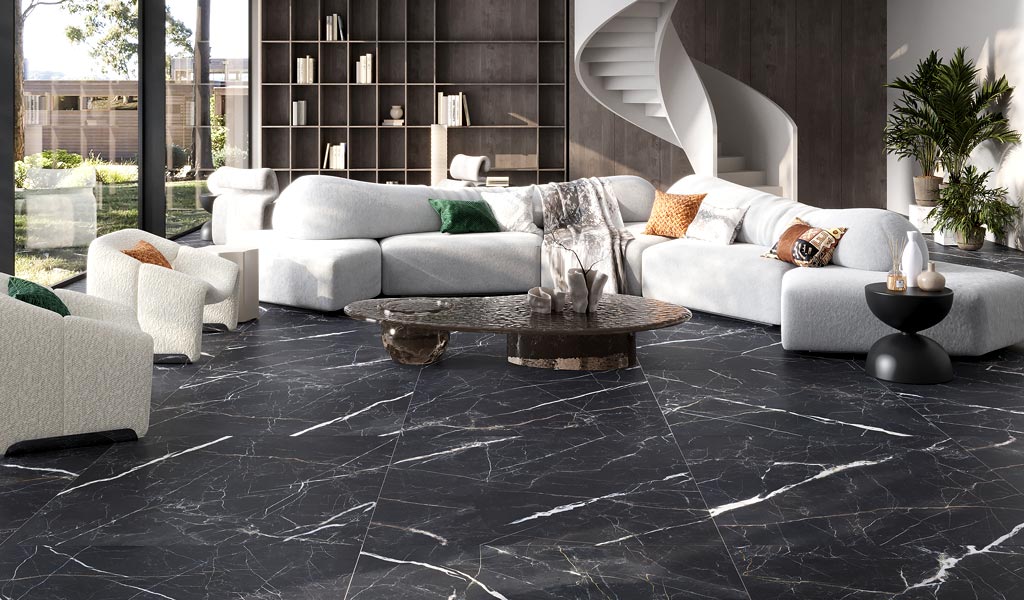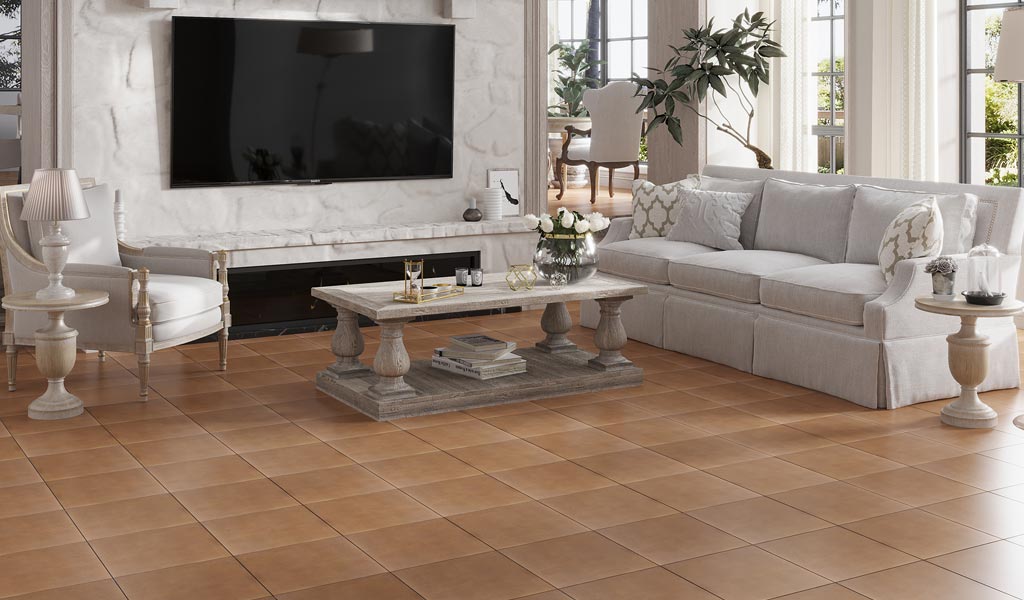Peel and Stick Tile vs. Traditional Tile: Which One is Right for You?
Nov 14, 2024Are you confused about whether to pick peel-and-stick tiles or traditional tiles for your space? No worries, we've got your back! Consider these pros and cons before picking the tile variety that perfectly fits your requirements. Making informed decisions keeps you safe after all, isn't it?
What Is Peel and Stick Tile?
Peel-and-stick tiles are also known as self-adhesive tiles, sticky tiles, instant tiles, peel-and-press tiles, or stick-on tiles. Updating walls can feel like a big commitment, but self-adhesive tiles are a clever alternative for getting a fresh look without the long-term investment.
Much like wallpaper, these tiles adhere directly to the wall, making them an affordable and convenient option for a stylish, DIY transformation. But are they a quick fix or a lasting improvement? The answer depends on factors like your budget, room conditions, and design goals. Here's a closer look at what peel-and-stick wall tiles can offer and what you should know before deciding if they're the right choice for your space.
Pros of Peel and Stick Tile
1. Quick installation process - Goes by the name! With our best peel-and-stick tiles, now it's easy to transform a wall in just a few hours, making it ideal for instant projects. You just have to peel, stick, and admire.
2. Budget-friendly option - Own a stylish upgrade without a hefty price tag! They offer an affordable way to refresh your space on a small budget but with a big impact.
3. Versatility - They come in a variety of styles and textures, making them suitable for bathrooms, kitchens, and even accent walls. Their adaptability means you can achieve almost any look, from sleek and modern to rustic and cozy.
4. Damage-free removal - Ideal for renters or frequent decorators, peel-and-stick tiles can be removed without harming the wall beneath. Just peel them off when you're ready for a new look—no residue or wall repairs are needed.
7. Stylish design - Rival traditional tile looks with your stylish yet simple designs of peel-and-stick tiles. Be it hexagon, picket, or subway tile designs, we have it all for you @ the best tile store - Apollo Tile! Enjoy our luxury peel and stick tiles by ordering in one click and experience ultimate peace of mind with our services.

8. Minimal tools required - You just need a utility knife, a ruler, and a pencil to mark and cut these peel-and-stick tiles. You can also make use of a straight tool cutter for precise, detailed, and intricate cuts.
9. Low commitment & maintenance - When style changes, you can easily swap them. Moreover, their non-porous surface makes them easy to wipe clean. When upkeep is a breeze, why would you say no to peel-and-stick tiles?
10. Space-saving solution - Peel and stick tiles provide a thin, durable layer that adds visual interest without taking up extra space. They're perfect for small areas where bulky tiles are not preferred.
Cons of Peel and Stick Tile
1. Strength and Endurance - Peel-and-stick tiles are durable enough to withstand everyday use and light moisture but can struggle with prolonged exposure to water, like in shower floors or high-traffic wet areas. Without grout or a cement backer board, they are more vulnerable to moisture at tile seams, which can lead to lifting or bucking. However, these tiles work wonderfully in dry areas or low-moisture spaces, where they can stay firmly in place and last longer.
2. Quality - They mimic high-end materials like marble and wood, being impressive from a distance. But they lack texture and depth which adds tactile richness to your space. They are affordable and perfect for short-term updates and renters who wish to refresh their space without a big investment.
3. Usability - Instant tiles adhere best to smooth, clean, non-porous surfaces, which limits their usability. They may not stick well to textured walls, rough wood, or heavily uneven floors, which might lead to lifting or gaps over time. But in well-prepped spaces like clean, flat walls or even backsplashes they're a quick solution with a neat finish.
4. Temporary solution - If you are seeking a long-term, permanent installation, then sticky tiles are not the right choice. They tend to have a shorter lifespan and offer a temporary solution for those willing to refresh their décor or renters needing removable options.
5. Limited repair options - If a tile is damaged, replacement is preferred to repair. Although replacements are easy, matching exact shades or patterns becomes a challenge.
What is Traditional Tile?
Traditional tiles bring classic charm and time-honored craftsmanship to any space, connecting us to age-old design. Think iconic ceramic, porcelain tile, stone options like marble, travertine, or slate tiles, and glass tiles, with timeless patterns like subway, hexagon, basketweave, picket, penny round tile, field tile, or Moroccan tile styles. These tiles are all about durability, quality, and versatility, making them perfect for adding a bit of heritage and elegance to both modern and vintage-inspired interiors.
Pros of Traditional Tile
1. Enduring Durability - Traditional tiles like ceramic tile, porcelain tile, and stone tiles are built to handle life’s daily wear and tear with ease. Do you have a shower that sees a constant splash zone or a kitchen floor that doubles as a racetrack for pets and kids? No worries! Our traditional tile varieties are crafted to shrug off water, resist scratches, and still look incredible years down the road.
It's all about surviving and thriving down the lane, isn't it? When properly installed, traditional tiles can last a lifetime—standing firm through everything from spills to splashes, all while keeping their original charm. They're not just tiles but a timeless investment in quality and style when you pick them from Apollo Tile.
2. Timeless Style - Traditional tiles bring iconic patterns and textures to a space that simply never goes out of style. Classic subway tiles or timeless hexagon designs in ceramic or stone are versatile choices that blend beautifully with a range of styles, from vintage to contemporary. These looks can elevate a bathroom or kitchen, adding elegance and charm.
3. Heat and Water Resistance - Mostly traditional tiles are non-porous, and naturally resistant to moisture and high temperatures, making them ideal for bathrooms, kitchens, and even fireplace surrounds. Glass mosaic tiles or high-quality stone tiles, for example, hold up well against moisture without fading or staining, making them perfect for shower walls and backsplashes. Pick from our wide range of the best peel-and-stick tiles for showers!
4. Authentic Texture and Depth - Traditional tiles are made from real materials like clay, stone, and glass, giving them a depth and texture that amps up your room’s ambiance. This natural texture is particularly striking in spaces like the kitchen, where stone or marble tiles can bring a touch of luxury to backsplashes or floors.
5. Easy Customization - With traditional tiles, you have the freedom to get creative with layouts, colors, and finishes. Whether you’re after a classic herringbone pattern with mother-of-pearl tiles or a geometric design in porcelain material, traditional options offer the flexibility to bring unique, personalized visions to life.
6. Increased Property Value - High-quality traditional tiles are often seen as a premium addition to any home, which can help increase property value. Their durability, beauty, and association with skilled craftsmanship make them a valuable long-term investment, in kitchens, living rooms, and bathrooms.
Cons of Traditional Tile
1. Investment matters - Traditional tiles aren't exactly light on the wallet. Between the cost of the materials and professional installation fees, they can feel like a pretty hefty upfront commitment. But here's the thing: you're paying for craftsmanship, quality, and durability that can last decades and it's worth it.
2. Consumes time - Though not as easy as peel and stick tiles, it involves mortar, grout, precise measurements, and yes - a little bit of patience too. But you can count on the pros - the know-how, and peace of mind that your tile won't lift off the wall. Still a choice for DIYers with enough guidance.
3. Repairs possible - A minor number of repairs is possible and there is no need to consider replacing the tile which is almost like a mini-renovation. But still, in some cases, you'll need to remove a larger section to get a precise fix which involves time and effort.
4. Grout maintenance - Grout lines can attract dirt and stains over time, especially in high-traffic areas. Regular maintenance—like cleaning and resealing—can help, but it's an extra task on the to-do list. It's worth it for the look!
How to Install Peel and Stick Backsplash Tile & Traditional Tile
Installing a peel-and-stick backsplash tile is about as easy as it gets; peel off the backing, align it carefully, and press it onto the surface—no extra tools, grout, or mess involved. It's a perfect DIY project for a weekend that'll make a big impact with minimal hassle.
Traditional tile installation, however, is a different ballgame and involves precise measurements, mortar, grout, and a bit more patience. But with the right prep, this process yields a durable, long-lasting surface. If you're new to tiling, don't sweat it; start small with peel and stick, or for traditional tile, consider bringing in a pro to nail the look.
You can also equip yourself with the best instructions and tutorials to get it right—there's plenty of guidance out there to help you achieve a flawless finish. With the right resources, you'll be tiling like a pro in no time.
How to Decide Between Peel and Stick Tile vs. Traditional Tile
Deciding between peel-and-stick and traditional tile comes down to your budget, timeline, and commitment level. Peel and Stick is budget-friendly, easy to install, and works great for quick makeovers or rental spaces.
Traditional tile, on the other hand, is ideal for those willing to invest a bit more for durability and that high-end, finished look. If you want a solution that stands the test of time, traditional tile is hard to beat. But if you're craving flexibility and DIY ease, peel and stick may be the way to go. Ultimately, both types have perks—it's all about what fits your space and vision.
Frequently Asked Questions:
1. How durable is peel-and-stick tile?
Peel-and-stick tiles can be used in areas with low and moderate moisture. They are durable and fit best in backsplashes and accent walls but not for floors, high traffic, or wet environments.
2. Do I need to grout peel and stick tile?
No, there is no need to grout peel-and-stick tiles, but you can expect some water infiltration due to this in moisture-prone walls.
3. How long do peel-and-stick tiles last?
Peel-and-stick tiles are expected to last several years with proper installation and maintenance. But they may need to be replaced when there are high moisture levels or heavy usage.
4. Can I use peel-and-stick tile on bathroom walls or around a fireplace?
Yes, it can be used on bathroom walls but with less exposure to water. We also have heat-resistant peel-and-stick tiles specifically designed to withstand up to 150 degrees Fahrenheit and can be used around fireplaces.
5. Are traditional tiles suitable for high-traffic areas?
Porcelain, ceramic, and glass tiles are suitable for high-traffic and commercial areas. They are tough and moisture-resistant that fit into kitchens, bedrooms, bathrooms, living rooms, and entryways.
6. Do traditional tiles need a base for installation?
Yes, generally we recommend having a cement or waterproof backer board as the base for the installation of traditional tiles as it helps to avoid loosening or cracking in both dry and wet areas.
7. Do we need to grout and seal traditional tiles?
Yes, we recommend grouting and sealing traditional tiles. When grouting helps to fill gaps between tiles and enhances durability, preventing water penetration, only marble tiles need to be sealed. Sealing is optional for other tile varieties
8. How to maintain traditional tiles?
Traditional tiles like porcelain, ceramic, and stone are relatively low-maintenance, requiring regular cleaning and occasional re-sealing for natural stone options. With proper upkeep, they can maintain their appearance and durability for many years.
9. How to prevent cracks in traditional tile installations?
Expert installation is the key to avoiding cracks and ensuring a leveled surface, using the right underlayment, and providing sufficient grout spacing help to minimize cracks. Expansion joints reduce cracks when areas are prone to temperature changes.

